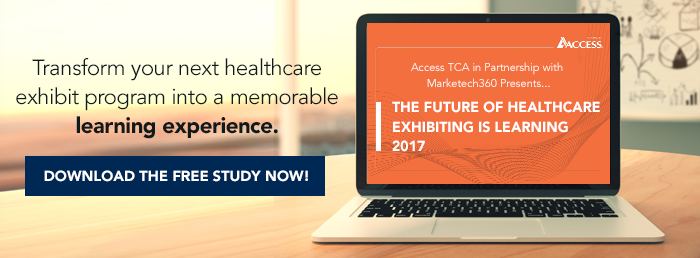According to all sorts of surveys, trade show attendees want to learn. Learning, particularly adult learning, is a strange and highly personal activity. Before we consider the “how” of learning at trade shows, let’s go back to school for a minute. Depending on your age, you learned by rote, by repetition, by lectures, by “projects,” and occasionally by experiencing content.
Experiencing content? Say what?
Assuming your staff is well-trained and could talk about your products or services until the lights go out in the hall, you might be missing the opportunity to put the learning experience into a meaningful context.
Many new and wonderful technologies enhance learning at trade shows. There is the possibility of developing an interactive game or a theater presentation for attendees. But plugging in any one of these tactics before developing a strategy is putting the proverbial horse before the you-know-what.
There is a temptation to get super excited about all the shiny objects available and to build a strategy around “how can we use VR?” instead of “how can we facilitate learning in our exhibit?” To be effective, the learning experience needs to occur in context, and the delivery of information needs to flow from context, not from uber-coolness.
The visitors to your exhibit have a wide range of backgrounds and expectations. While the temptation is to set up a one size fits all experience—as in, “this is how we educate attendees”—there need to be options to accommodate the learning preferences of a diverse attendee base.
Your staff is prepped to present product knowledge, but are they adept at assessing the existing level of awareness among the visitors who come to learn? (Caveat: no assumptions should be made based on gender, ethnicity, age, or apparel. There are millennial CEOs of huge companies who prefer to wear jeans and a baseball cap.) So much information is available online that savvy staff will do a quick read about how much the attendee already knows to keep the presentation from being too basic. The reverse, of course, is also true. If time-pressed attendees haven’t had a chance to research your products and services before coming to the show, by all means, start with the fundamentals.
Successful adult learning involves sensory experiences, and a segue from a rep presentation to a VR experience illustrating the message is very powerful. The same is true for a theater presentation which addresses not only the product message but also builds preference for your products and services over those of your competitors.
After any of these experiences, a personal follow up with exhibit staff can cement the absorption of the educational content. The learning experience should above all be collaborative, and the integration of learning tactics critical.
The underlying truth is if your attendees wanted to learn the features and benefits of what you are offering, they could probably do that online. What they can’t do online is have a one-on-one conversation with another human being who can enhance the impact of content with well-chosen tactics and help drive the message home while providing a memorable experience. This multi-faceted approach takes advantage of the in-booth experience that you have created. It is entirely possible to capitalize on attendees’ motivation to learn, but it must be part of an educational strategy. It’s not a good idea to load up your exhibit with cool stuff and assume that you are providing education.
Our report, The Future of Healthcare Exhibiting is Learning, 2017, contains information not just for healthcare exhibitors. Learn more about adult learning preferences by downloading the report now.


